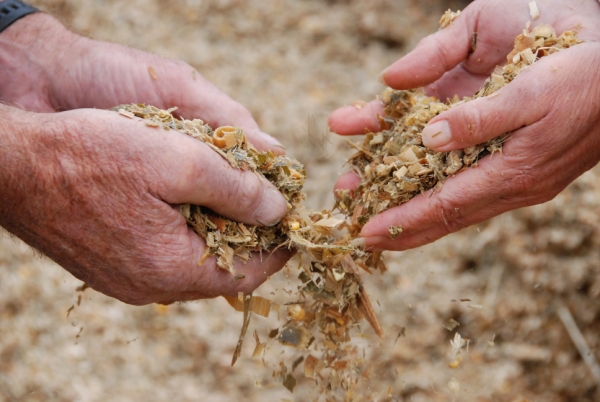Harvesting
maize silage harvest best practice
"squeeze test" (indication of dry matter%)
"squeeze test" (indication of dry matter%)
NOTE: This is not a replacement for a laboratory assessment of DM% of chopped maize
- Grab a large handful of chopped maize arriving at the stack or silage pit.
- Squeeze chopped material very firmly for 1-2 minutes into a tight ball
- Quickly release and watch the maize ball:
- Under 25% DM – Ball holds its shape, free plant juices flow between fingers.
Delay the harvest - 25-30% DM – Ball holds its shape, very little free plant juices, moisture is noticeable on hands.
Delay the harvest, or chop longer TLC 15-20mm - 30-40% DM – Ball slowly loses its shape and crumbles. Hands feel just damp but no free plant juices.
Target – start or continue with the harvest - Greater than 40% DM – Ball is dry and crumbles/falls apart quickly. Hand feels dry. Chop shorter TLC 5-9mm to improve packing density.
Consider use of a lactobacillus buchnerii aerobic stability inoculant
did you know?
Squeezing a handful of chopped maize can help estimate possible DM%. This won't replace laboratory or microwave methods for DM% measurement.
2. Theoretical length of chop
2. Theoretical length of chop
Check length of ‘average’ chopped plant material. Very occasional longer leaf pieces are not unusual.
- Theoretical length of chop (“TLC”) for maize silage 32-38% DM = 10-15mm.
- Maize silage less than 30% DM TLC = 15-20 mm
- Maize silage greater than 40% DM TLC = 5-9 mm
did you know?
Chop length can be adjusted for maize crops that are harvested too wet or too dry.
3. cob processing
3. cob processing
Target pieces smaller than tip of your little finger. Larger pieces increase problems of air exclusion from the stack.
4. Percentage of kernels processed
4. Percentage of kernels processed
Placing the silage sample in a bucket of water, allowing the cob/stover to float off, then pouring water out, can leave kernels at the bottom to improve the speed at which kernel processing can be checked.
Sort chopped material, checking for:
- Extent of kernel processing. Kernels must be well processed/crushed, not just nicked.
- Percentage of kernels adequately processed. Target is 95%+. Very low numbers of unprocessed, very small kernels are acceptable.
did you know?
Cattle cannot digest unprocessed kernels so aim for more than 95% of kernels to be crushed/cracked.

